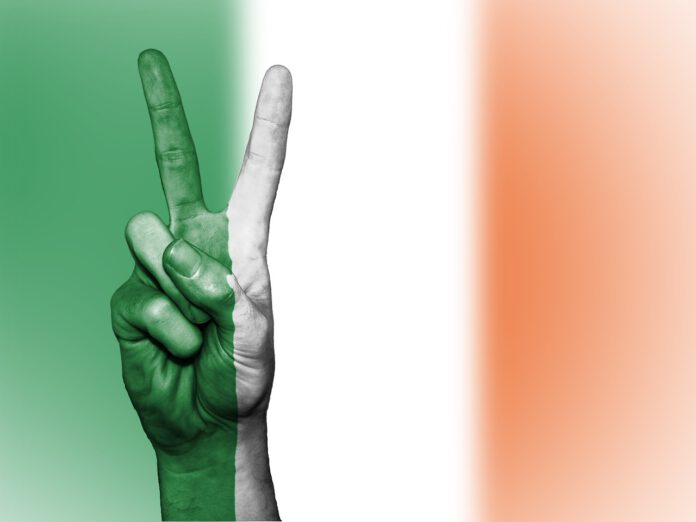Dublin University was the first organised rugby football club in Ireland, having been founded in 1854. The club was organised by students who had learnt the game while at English public schools. During the third quarter of the nineteenth century, and following the adoption of a set of official rules in 1868, rugby football began to spread quickly throughout Ireland, resulting in the formation of several other clubs which are still in existence, including NIFC (1868); Wanderers (1869); Queen’s University (1869); Lansdowne (1873); Dungannon (1873); Co. Carlow (1873); UCC (1874); and Ballinasloe (1875) which amalgamated with Athlone to form Buccaneers.
In 1874, the Irish Football Union (reconstituted as the Irish Rugby Football Union after unification with the North of Ireland Union) was formed. Ireland lost their first test match against England 7–0 at the Oval on 15 February 1875. Both teams fielded 20 players in this match, as was customary in the early years of rugby union; it was not until 1877 that the number of players was reduced from 20 to 15. Ireland’s first home game was also against England in the same year held at the Leinster Cricket Club in Rathmines as Lansdowne Road was deemed unsuitable. The first match at Lansdowne Road was held on 11 March 1878, with England beating Ireland by 2 goals and 1 try to nil.
It was not until 1881 that Ireland first won a test, beating Scotland at Ormeau in Belfast. Ireland turned up two men short for their game in Cardiff in 1884 and had to borrow two Welsh players. The first victory Ireland had at Lansdowne Road took place on 5 February 1887. It was also their first win over England, by two goals to nil. On the third of March 1888, Ireland recorded their first win over Wales with a goal, a try and a drop goal to nil.
In 1894, Ireland followed the Welsh model of using seven backs instead of six for the first time. After victory over England at Blackheath, Ireland won back-to-back matches for the first time when recording their first win over Scotland on 24 February 1894. Ireland went on to beat Wales in Belfast and win the Triple Crown for the first time.
In the 1890s, Rugby was primarily a game for the Protestant middle class, the only Catholic in Edmund Forrest’s 1894 team was Tom Crean. Of the eighteen players used in the three games, thirteen were from three Dublin clubs – Wanderers, Dublin University and Bective Rangers – and the remaining five were from Ulster. They went on to win the Home international championship twice more before the old century was out (1896 and 1899), so that by 1901 all four of the Home Unions had tasted success at a game that was growing in popularity with players and spectators.
Early 20th century: 1901–45[edit]
1920 illustration of the Ireland versus Wales rugby match
Such was the level of interest in the visit of the first All Blacks team to Dublin in November 1905 that the IRFU made the match the first all-ticket rugby international in history. Ireland played only seven forwards, copying the then New Zealand method of playing a “rover”. The game ended New Zealand 15 Ireland 0.
On 20 March 1909, Ireland played France for the first time, beating them 19–8. This was Ireland’s biggest victory in international rugby at that time, their highest points tally and a record five tries. 30 November 1912 was the first time the Springboks met Ireland at Lansdowne Road, the 1906 tour game having been played at Ravenhill. Ireland with seven new caps were overwhelmed by a record margin of 38–0, still a record loss to South Africa who scored 10 tries. In 1926, Ireland went into their final Five Nations match unbeaten and with the Grand Slam at stake lost to Wales in Swansea. Ireland again came close to a grand slam in 1927 when their sole loss was an 8–6 defeat by England.
Post-war: 1945–59[edit]
In 1948, inspired by tactician and fly-half Jack Kyle, Ireland beat France in Paris, England at Twickenham and a 6–0 win over Scotland at Lansdowne Road. They clinched their first Grand Slam in the Five Nations with a win against Wales at Ravenhill, Belfast. Ireland were champions and Triple Crown winners again in 1949.
The Irish used only 19 players in clinching the 1949 Championship and Triple Crown, only the fourth time that the Triple Crown had been retained.










